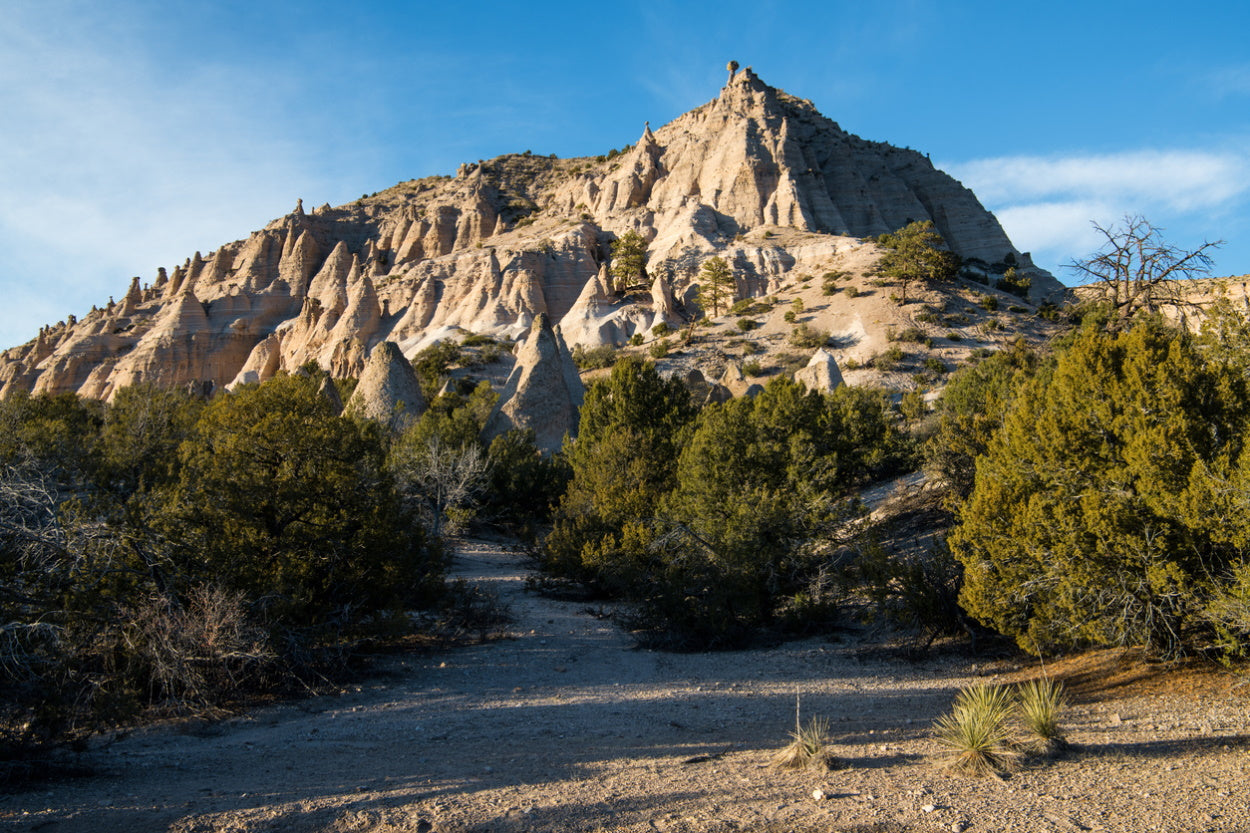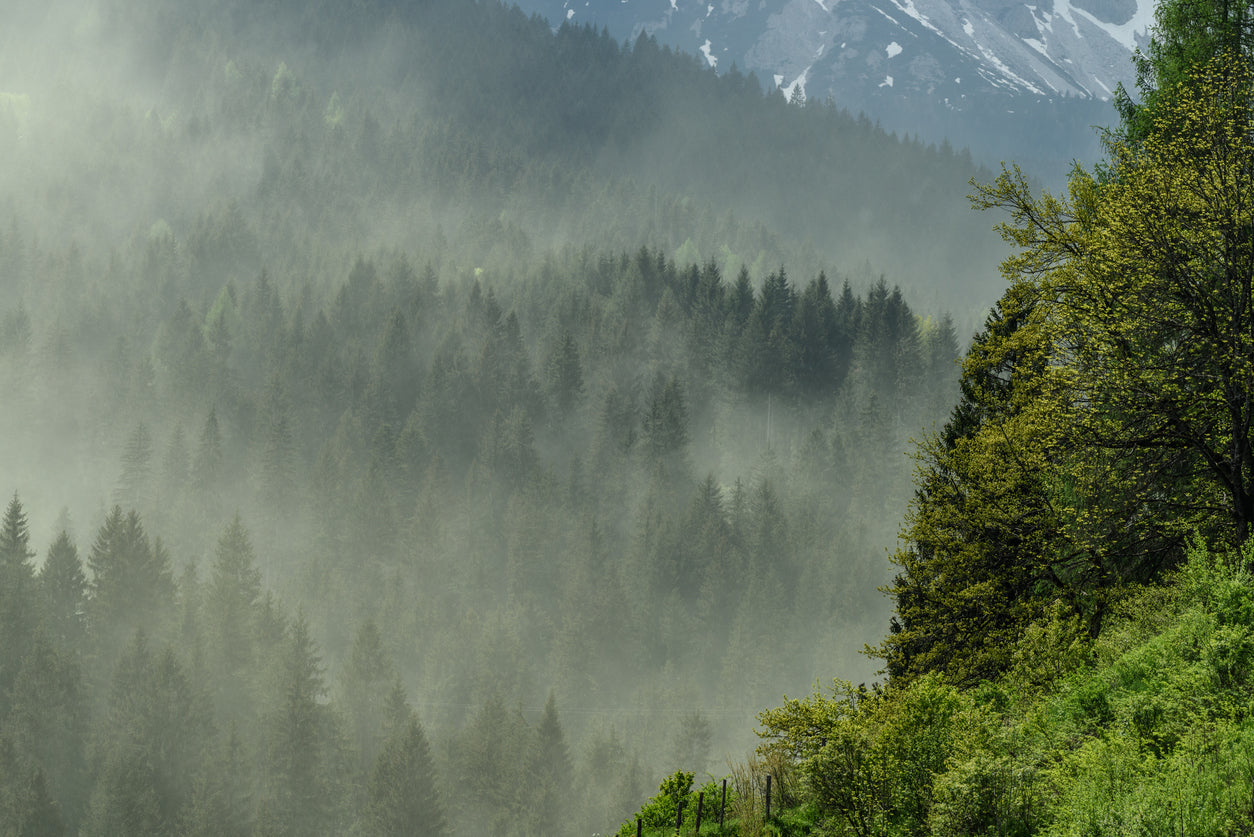For many allergy sufferers springtime brings the worst of the pollen-induced allergy season. But depending on where you live and which pollen types you are sensitive to, you may be dealing with symptoms of your pollen allergy for longer than you expect. While many trees pollinate during the spring, there are some that release high levels of pollen through the summer, fall and winter months. Knowing which kinds of trees pollinate—and when—can make you better prepared to get through the next allergy season.
What is tree pollen?
Seed-bearing plants, including trees, create pollen as a part of their reproductive process. Because trees are typically rooted in one place, they must rely on the wind to spread the pollen spores that they release into the air. To counteract this method of untargeted pollen distribution, trees produce high levels of pollen that can be carried on the wind for miles. If you have a tree pollen sensitivity, it means that your immune system overreacts when it comes into contact with pollen. Symptoms of a pollen allergy can include sneezing, itchy or watery eyes, and a runny or stuffy nose. More severe allergic reactions to pollen can even trigger asthma attacks.
What are the most common allergenic tree pollens in the U.S.?
If you live in the United States, the chances are high that you will encounter tree pollen no matter where you reside. Fortunately, many people are only allergic to specific types of tree pollen, and knowing which types of tree pollen you are allergic to can help you reduce your airborne allergen exposure. The most prevalent types of tree pollen producers in the United States are:
Pine Trees
These evergreen trees produce high levels of pollen that are often visible on outdoor surfaces. Contrary to what you might think, pine pollen allergies and “Christmas tree” allergies are two different things.

According to the American College of Allergy, Asthma & Immunology (ACAAI), if you have an allergic reaction to your Christmas tree, it is probably triggered by airborne weed pollen that settled on the tree’s branches during the fall months, rather than by the tree itself.
Oak Trees
Oak tree pollen levels are highest in the morning, so those with oak pollen allergies should reserve outdoor activities until the afternoon or evening. A wide range of oak trees can be found throughout the United States, both in residential areas and in forests. These large trees produce high levels of pollen, meaning that people with oak pollen allergies may have to take extra precautions to limit exposure.
Juniper Trees
This branch of trees includes around 70 species of evergreens, including the infamous Mountain Cedar (which, despite its name, is not a cedar tree at all). Mountain Cedar trees pollinate during the cold winter months, and the distribution of pollen is so widespread that people in areas with Mountain Cedar trees have coined the term “cedar fever” to describe the allergic reactions caused by exposure to this type of pollen.
Mulberry Trees
Mulberry trees (which can also come in shrub form) are known to produce high levels of pollen. These trees are widespread because of their heat resistance and ability to survive droughts. Unfortunately, the fruitless (male) mulberry trees produce so much pollen that some cities have banned planting new ones to help protect their citizens from allergic reactions.
Palm Trees
Palm trees are related to grasses, so palm tree pollen will typically affect those sensitive to grass pollen. Different types of palm trees can produce significantly different levels of pollen each year. For example, Date palm trees can produce large amounts of allergy-causing pollen, but Royal palms are not considered to be a significant source of allergens.
Which pollen-producing trees appear in your region?
As the climate varies from region to region, so too does the distribution of pollen-producing trees. Below, find the main pollen-producers from each region in the United States, along with the seasons in which they are most active.
West Region
This region includes the mountainous states Arizona, Colorado, Idaho, Montana, Nevada, New Mexico, Utah and Wyoming as well as Pacific states Alaska, California, Hawaii, Oregon and Washington.

Juniper trees on a desert peak in New Mexico
The main pollen-producing tree in this region is the Juniper. Different species of Juniper trees can be found from New Mexico up to Washington, but the Common Juniper and the Rocky Mountain Juniper, which both pollinate during the spring, are the most widely distributed. Other trees that produce allergenic pollen in the western U.S. are, by season:
- Springtime: Willow, ash, oak and maple
- Summer: Privet, olive and willow
- Fall: Sagebrush and privet, but only in Pacific states with a milder climate
- Winter: Ash, maple and mulberry
South Region
In the West South Central states of Arkansas, Oklahoma and Texas, one of the primary sources of tree-pollen-related allergy symptoms is the Mountain Cedar, also called Ashe’s Juniper. Unlike many other allergen-producing trees, the Mountain Cedar starts pollinating during the winter months of November to January.

Mountain cedar pollen is the main cause for concern in Texas, Oklahoma and Arkansas
Other allergen-producing trees in the West South Central region, which also includes Louisiana, are, by season:
- Springtime: Willow, hickory, oak, walnut, juniper, mulberry and maple
- Summer: Walnut, mulberry and willow
- Fall: Groundsel tree (AR and LA) and privet (LA only)
- Winter: Ash, maple and mulberry
In the South Atlantic states, Delaware, Florida, Georgia, Maryland, North Carolina, South Carolina, Virginia, District of Columbia and West Virginia, the more concerning pollen-producing trees are:
- Springtime: Willow, oak, hickory, juniper, mulberry and maple
- Summer: Walnut, mulberry and willow
- Fall: Groundsel tree
- Winter: Ash, willow and mulberry
Note: In Florida, some palm trees can produce pollen throughout the entire year.
Northeast Region
In the Mid-Atlantic states New Jersey, New York and Pennsylvania, the main tree-related pollen concern comes from oak trees, which mostly pollinate during the spring, and mulberry trees, which can pollinate throughout the winter and spring. In New Jersey, pine trees are of additional concern because they are known to coat outdoor surfaces with pollen each spring.

Oak trees are the main pollen concern in the Mid-Atlantic states
In the Mid-Atlantic states, along with Connecticut, Maine, Massachusetts, New Hampshire, Rhode Island and Vermont, allergen-producing trees include:
- Springtime: Willow, hickory, oak, walnut, juniper and mulberry
- Summer: Walnut, ash and willow
- Fall: Groundsel tree and privet
- Winter: Ash, willow and mulberry
Midwest Region
The Midwest region includes Illinois, Indiana, Iowa, Kansas, Michigan, Minnesota, Missouri, Nebraska, North Dakota, Ohio, South Dakota and Wisconsin. Juniper pollen is one of the most significant sources of tree-related allergy symptoms in the spring, while mulberry pollen can cause symptoms from the spring through the summer.

The Mulberry tree can be a pollen concern from spring to summer
Other top pollen-producers include:
- Springtime: Willow, ash, hickory, oak, walnut, juniper and mulberry
- Summer: Walnut, mulberry, privet, ash and willow
- Fall: None
- Winter: Ash, willow and mulberry
Less-common tree pollens
Other trees that may be less common allergy triggers, but may still be a cause for concern are:
- Birch: Spring to summer
- Cottonwood: Winter to spring
- Eucalyptus: Spring
- Elm: Spring, fall and winter (depending on the species and location)
- Alder: Winter to spring
- Poplar: Spring to summer (though the white poplar can begin pollinating in the winter)
How to keep tree pollen season from affecting your life
One of the most significant ways to minimize your pollen-related allergy symptoms is to avoid contact with tree pollen whenever possible. To help reduce your exposure to tree pollen, you can avoid going outdoors during the morning when pollen counts are usually highest. Additionally, keeping an eye on mold and pollen counts can help you plan outdoor activities for days with less airborne allergens. To avoid bringing pollen indoors, you can keep windows closed and wash your hair and clothes after spending time outside. No matter where you live, tree pollen can be a significant allergy trigger. When you learn which trees you are sensitive to—and when they pollinate in your region—you can be better prepared to reduce your exposure and minimize your allergy symptoms.







